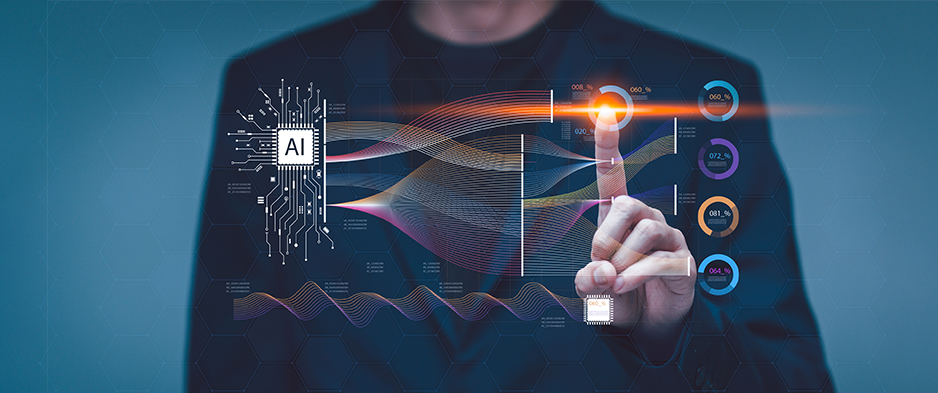Artificial intelligence is rapidly reshaping the technological landscape and transforming the way industries operate. The integration of machine learning, robotics, and intelligent systems is poised to deliver substantial benefits in sectors such as manufacturing, logistics, and industrial automation. This article explores the key AI trends to watch in 2025, highlighting the transformative impact these advancements will have on the future of industry.
Artificial Intelligence in 2025: What to Expect?
The year 2025 is set to be a transformative period for artificial intelligence, particularly in the fields of industrial automation and robotics, enhancing efficiency, productivity, and adaptability. Here are some of the main trends and areas of AI development to look out for in 2025:
Advanced Predictive Maintenance
Predictive maintenance has revolutionized industrial automation, and by 2025, advancements in AI will take it to new heights. Leveraging machine learning algorithms, AI will analyze vast amounts of data to predict failures before they occur, reducing downtime and maintenance costs while extending the lifespan of machinery. Integration with advanced sensors will allow for real-time monitoring, enhancing the accuracy and timeliness of maintenance alerts.
AI-Based Quality Control
Quality control is a critical aspect of industrial manufacturing. AI technologies, such as computer vision and deep learning, are transforming this field by enabling the automation of inspection systems. AI-powered systems offer more precise defect detection and anomaly identification compared to traditional methods. Advances in image recognition and real-time data processing will improve quality control efficiency, minimize waste, and ensure higher product standards.
Autonomous Robotics and Collaborative Robots (Cobots)
The rise of autonomous robots and collaborative robots (cobots) is one of the most significant trends in robotics. By 2025, AI will enhance their cognitive abilities, allowing them to perform complex tasks with reduced human intervention. Cobots will become increasingly adaptable, capable of learning from their environment and safely collaborating with humans. This evolution will significantly impact sectors like manufacturing, logistics, and warehousing, where flexibility and efficiency are paramount.
AI Edge and Real-Time Decision Making
The integration of AI at the edge, which involves processing data directly at the network’s edge rather than in centralized data centers, will see significant growth. In the context of industrial automation and robotics, this will result in faster decision-making, reduced latency, and increased system reliability. AI edge will enable real-time analysis and decision-making, a crucial element for time-sensitive applications such as automated assembly lines and robotic navigation systems.
Cybersecurity in Industrial Systems
Cybersecurity is becoming increasingly vital in industry and manufacturing. By 2025, AI will continue to play a pivotal role in defending against cyber threats. AI-driven security systems will detect anomalies, identify threats in real time, and respond promptly to mitigate risks, ensuring the protection of industrial operations in an increasingly complex digital landscape.
Energy Efficiency and Sustainability
Sustainability is a top priority across all industries, and AI plays a crucial role in this area. In industrial automation, AI optimizes energy consumption, reduces waste, and promotes more sustainable production practices. Intelligent energy management systems analyze consumption patterns and forecast needs, suggesting optimizations to reduce environmental impact. For instance, in production lines, AI will automatically adjust machine speeds based on demand, reducing energy consumption during low-activity periods and improving overall efficiency.
Supply Chain Optimization
Finally, supply chain operations optimization will be one of the primary areas of AI development in 2025. AI algorithms will analyze supply chain data to predict demand, optimize inventory levels, and enhance logistics planning. Robotics integrated with AI will further streamline warehouse management by automating picking, packing, and routing of delivery robots. This will lead to increased efficiency, reduced operational costs, and improved customer satisfaction.

